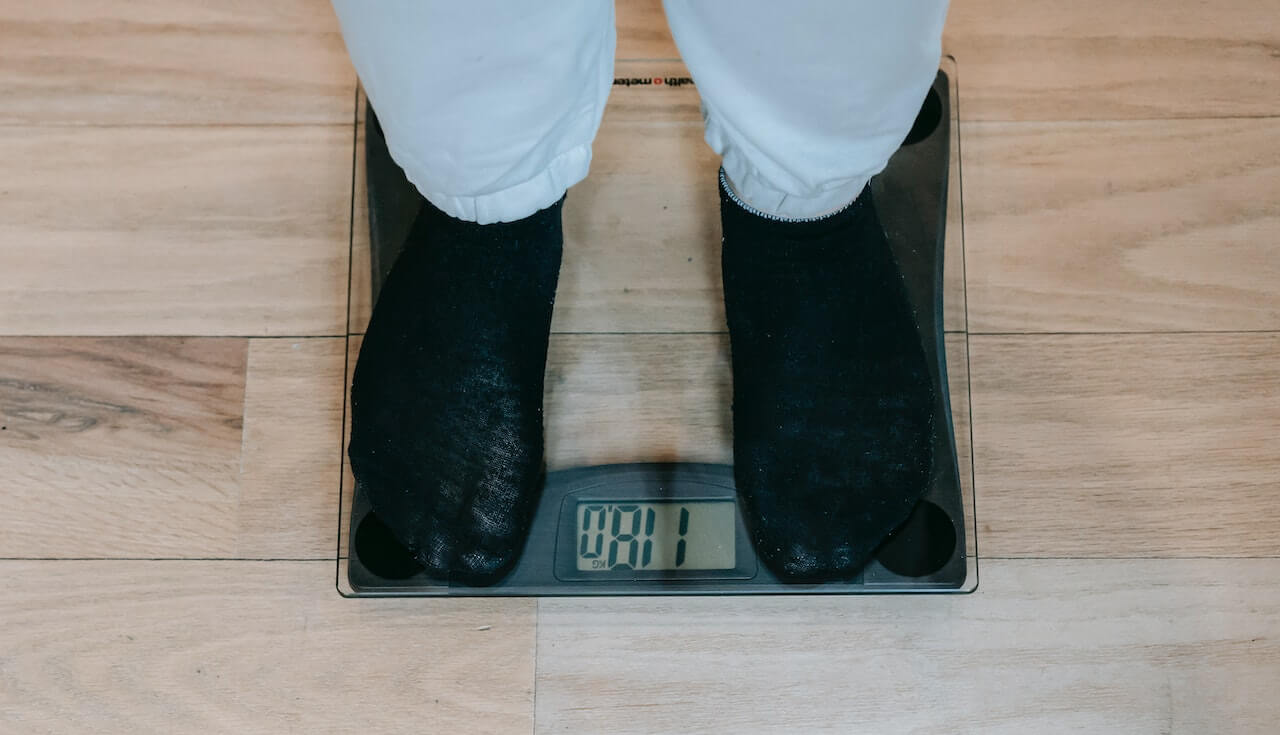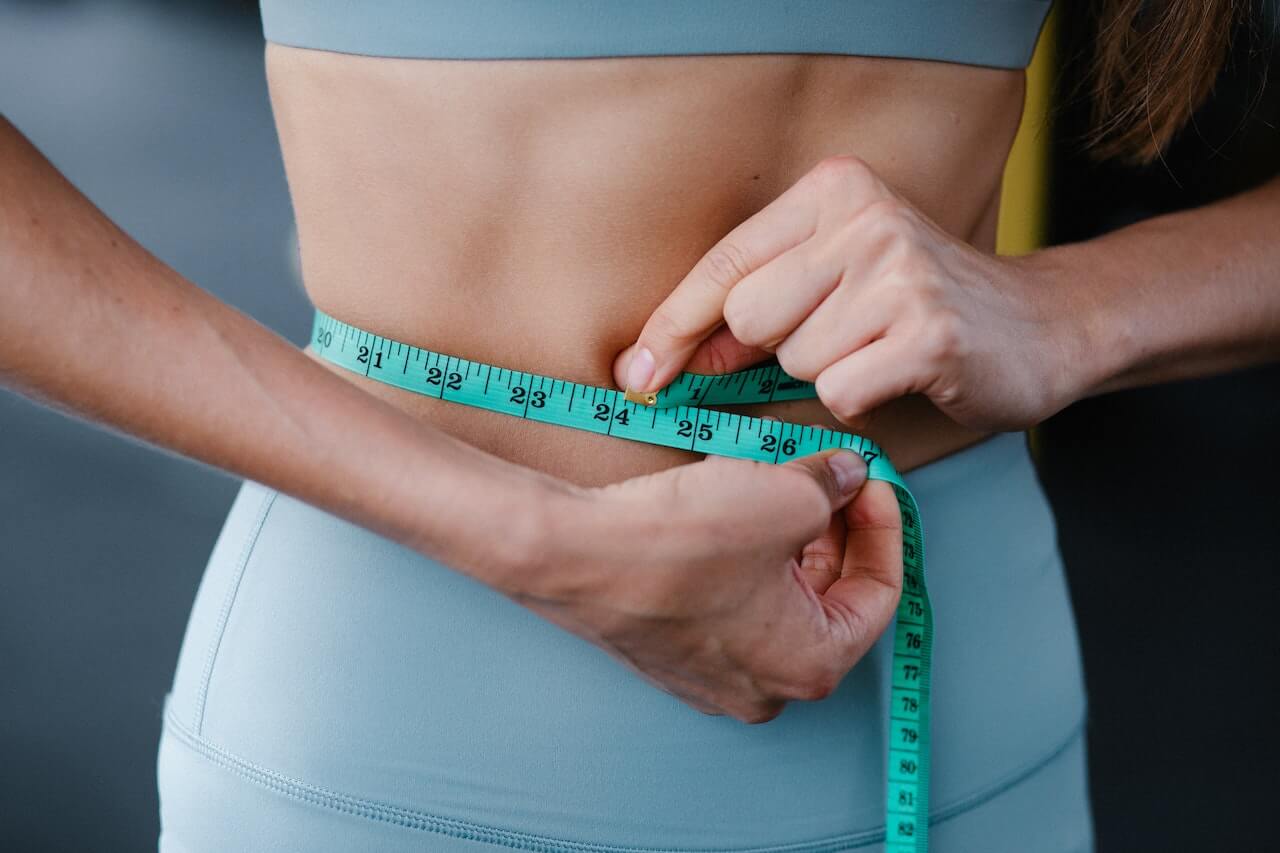A quarter of Americans set a New Year’s resolution in 2022 to “live healthier,” and another 20% wanted to lose weight.1 Many succeed, while others find the new diet overwhelming and revert to their old eating habits.
It just sounds overwhelming to “start a diet”. But the good news is, you are already successfully following a diet (aka your current eating pattern). Simply put, a diet is a summary of how you eat over time. The challenge is trying to change your diet to a healthier version that you can maintain. It is hard to change, especially when you’re faced with food choices to make throughout the day, every day.
In this article, we will give you nine tips for starting a healthy diet and sticking to it. Luckily, most of these tips are simple and easy to apply.
Set Realistic Expectations

Many people set unrealistic weight loss expectations. Instead, set a SMART goal. SMART goals are specific, measurable, achievabe, relevant and time-bounding. Setting an attainable goal in a realistic timeframe will help motivate you to change and see results faster. Setting unrealistic weight loss goals can be frustrating and delay or halt your progress.
It is incredible how transformative a weight loss of 5 to 10% of your total body weight can produce. If someone weighed 200 pounds, a 5% weight loss is 10 pounds, and a 10% weight loss is 20 pounds. Improvements in blood pressure, lipid levels, and glucose levels are seen with even a loss of 7 to 20 pounds.2
Imagine a ball starting to roll; once it gets rolling, it is much harder to stop than to keep going. It’s the same thing with setting realistic goals. Once you get going and have success, it is easier to keep making progress and setting more goals.
Get A Personalized Weight Loss Plan
Starting a diet that your co-worker had success following is tempting. But remember, your co-worker is different from you. Weight loss plans are not a one-size-fits-all solution. You are unique, and your weight loss plan should be personalized for success that is sustainable and encourages a healthy lifestyle. Some people do great with intermittent fasting or keto. Just as many people have a terrible time following those plans.
Many trained professionals can determine the best plan for you. A registered dietitian can help you find a long-term eating plan that meets your nutrition needs and considers many factors like family history, diseases, food allergies, or intolerances. Certified health coaches and psychologists are trained to help you make food and lifestyle changes.
Some tools integrate science and data to create customized plans. Signos creates a personalized weight loss plan catered to you. They take your glucose levels and nutrition data from your CGM to help you determine how your body responds to specific foods and drinks in real-time, so you can change or alter your lifestyle habits right as it happens. Signos can help you improve your health and maintain healthy habits, which allows you to stick to your weight loss plan.
Ditch the All-or-Nothing Mentality
It is common to want to follow a new diet 100% of the time. But this unrealistic goal can set you up for some significant frustrations and leave you feeling deprived. This can cause you to revert to old ways of eating and possibly regaining lost weight. Research shows that when following a strict or very low-calorie diet plan, dieters tend to regain the weight lost and gain even more back.3
Consider the 80/20 philosophy for following a new diet. Commit to following the diet 80% of the time and allow yourself freedom 20% of the time. This flexibility will enable you to socialize, eat at a favorite restaurant, or enjoy your favorite dessert in moderation. Remember, its the long-term lifestyle habits that matter most. A few untracked meals here and there won’t derail your weight loss goal.
Take Small Steps
Changing your whole lifestyle (food, beverages, physical activity level, stress management and more) isn’t done overnight. Instead, take it little steps at a time. Try one new change per day.
Here’s a tip to jump-start your diet:
Most people eat about 21 meals per week. Imagine improving one of those meals per day. Start with breakfast to make a slight change, like adding more protein in the form of eggs or Greek yogurt. As you see success with one meal change, you can focus on a different meal of the day for a couple of weeks. Those changes will add up quickly and lead to a new routine and support weight loss.
Reward Yourself
Creating personalized goals that are adjusted as progress is made is essential in maintaining weight loss in the long run.4 Setting SMART goals and providing a reward once achieved is more motivating than following generic goals. Consider a non-food reward.
Compare the following two goals and rewards.
- SMART goal 1: I will eat vegetables five times this week at dinner.
- Reward 1: I will buy a new food processor to make salsa once I eat vegetables five times a week for a month.
- Generic goal with no reward: I will eat more vegetables.
The SMART goal helps you attain your goal by creating actionable steps, plus a reward when accomplished helps keep you a little more motivated. You might choose a different reward like a massage, pedicure, new exercise shoes or socks, or movie night. The point is to pick something that will motivate you and doesn’t sabotage your diet.
Remember, setbacks happen. Learn from it and move forward. Punishing yourself will make you feel worse, and you may stop trying altogether.
{{mid-cta}}
Get Moving
Eating healthy is the most crucial factor for weight loss. You may have heard the saying, “You can’t out-exercise a bad diet.” While this is true, physical activity is a great way to motivate you to eat healthier and stay on track with your new diet.
Moving more each day will help you to see results faster. People who move more have lower rates of obesity.5 This movement does not have to be a run or high-intensity exercise for benefits. Moving more or having more NEAT (non-exercise activity thermogenesis) leads to burning more calories daily.5 Exercise has many health benefits that go beyond weight loss, like preventing diabetes, heart disease, and depression.
Don’t Focus on The Scale

The scale can be a tricky tool to use in measuring weight loss and diet success. A scale is only one tool to assess your progress. People lose fat and gain muscle mass at different rates based on uncontrollable factors such as hormones. You might be gaining muscle and getting slimmer, but the scale has barely changed.
Using other tools in addition to a weekly weigh-in can help you see progress. A body mass scan that measures changes in fat mass and muscle mass can be a great motivator. A simple measuring tape at home or how a pair of pants fits can give you the motivation you need. Five pounds of fat and five pounds of muscle weigh the same, but muscle takes up about half the space.
Don’t Be Too Hard on Yourself
Keep everything in perspective. One bad day or meal doesn’t cancel out all of the progress you have made. At the beginning of your weight loss journey, take some baseline measurements and assess your eating. These numbers, along with a snapshot of your eating, will help you to remember the progress you have made so far.
Maybe you started out skipping meals and then overeating after work. Now you are eating 2-3 meals with a good protein source like chicken and a serving of vegetables. That is huge progress! One day doesn’t revert you to the beginning. You just had a setback and can get back on track with your next meal or take a quick walk to clear your head.
The Bottom Line
Sticking to a new diet and making it last is a life-long process. Imagine climbing a large mountain. There are cliffs, valleys, and rivers between the bottom and the top. You will have ups and downs as you make changes. It will take time and commitment to climb the mountain. Enjoy the process and set realistic goals. You might be on mountain peak 1 of 30.
Learn More About Healthy Habits And Fitness with Signos’ Expert Advice.
Signos’ CGM can improve your health. This innovative tool works with you to create healthy eating habits and track your diet. You will learn from experts how food influences your glucose levels instantly and how to adjust your food choices based on your body’s response. Signos’ gives you a personalized weight loss plan while actively motivated rather than waiting to assess your eating days or weeks afterward. Take a quick quiz to determine if Signos is a good fit for you.
- Item 1
- Item 2
- item 3
































